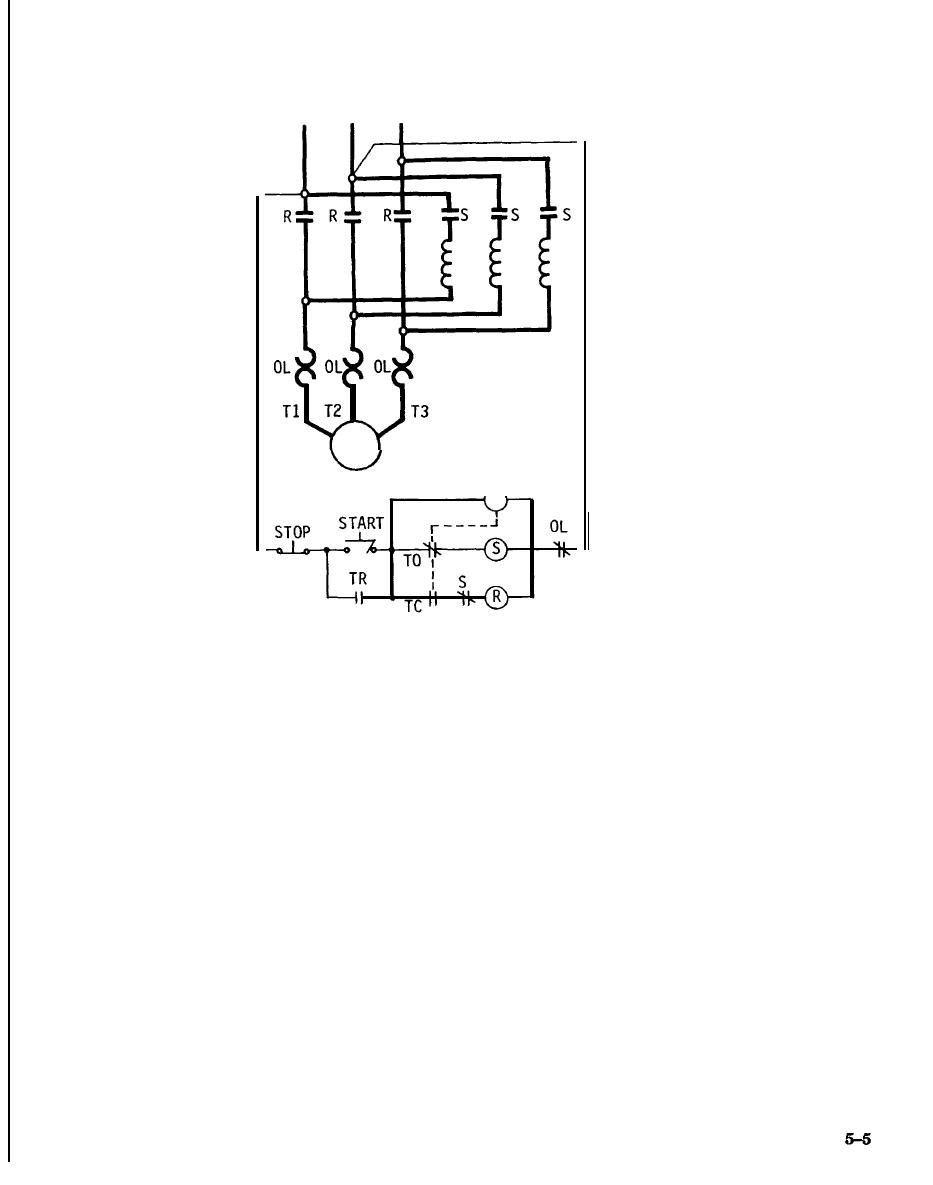

Custom Search
|
|

|
||
 TM 5-683/NAVFAC MO-116/AFJMAN 32-1083
L2
L3
L1
MOTOR
TR
L1
L2
NOMENCLATURE
Start Contactor
s
R
Run Contactor
TR
Pneumatic Timer
OL
Overload Relay
TR/TO
Contact Stays-Closed When TR Picks Up;
It Opens After A Time Delay.
Contact Stays Open When TR Picks Up;
TR/TC
It Closes After A Time Delay.
Figure 5-5 Autotransformer starter.
ings for normal delta operation. This type is limited
about 2/3 of normal inrush current. After a period of
to-wye-delta comectable motors but produces better
starting torque at a lower inrush current and is
other winding is energized through run contactor
used extensively with air-conditioning motors hav-
`2M". This operation permits the use of contactors
ing a high inertia load and a long acceleration time.
which are half as large as those required for the
(5) Solid-state starters. Solid-state starters (fig
reduced-voltage starters, resulting in approxi-
5-8) provide smooth, stepless acceleration of squir-
mately a 50 percent reduction in cost. However, the
rel cage motors from standstill to fill speed. It pro-
motor cannot carry its load until both windings are
vides extended starting times by supplying continu-
energized.
ously varying voltage to the AC motor from zero to
(4) Wye-delta starters. A variation on the part-
full voltage. Controlled starting of a standard squir-
winding starter is the wye-delta type, which starts
the motor with the windings connected wye, and
rel cage motor is accomplished by supplying re-
duced voltage to the motor terminals. This reduced
after a period of acceleration, reconnects the wind-
|
 |
|
 |
||